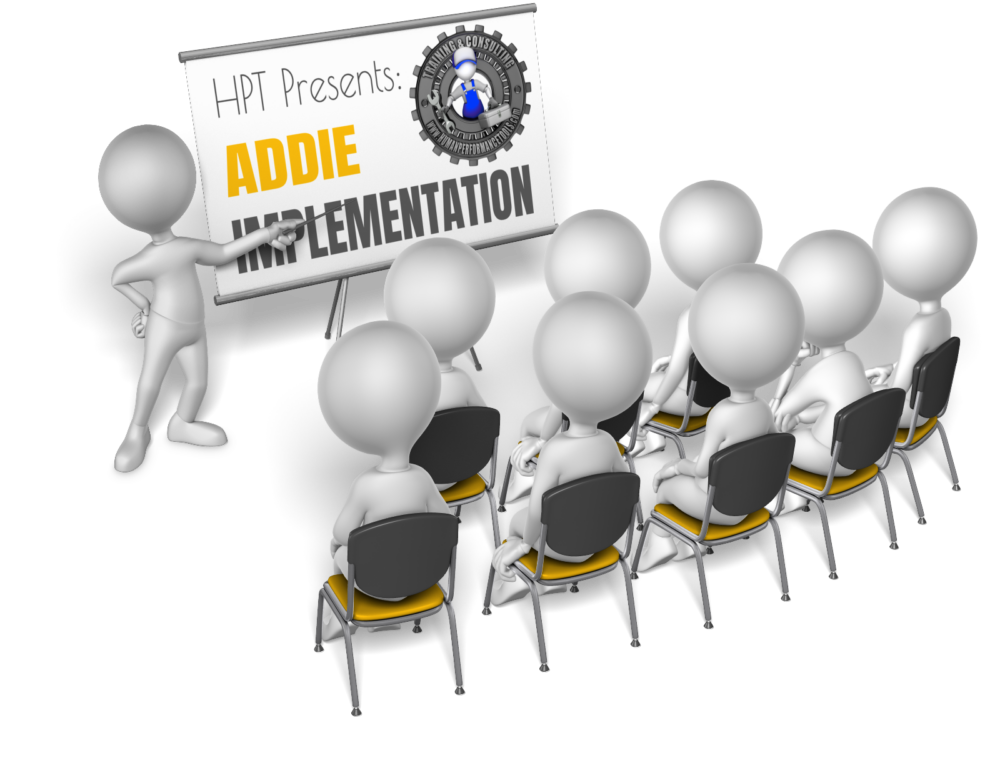The Implementation Phase of ADDIE: Part 5 of 6
Now that the Analysis has been completed, the Objectives were Designed, considered, and agreed upon, and the best methodology Developed for training, it is time to deliver! Implementation is that phase where students are in the classroom (or behind the computer) and learning what you and your team put together to close the performance gap.
Pilot Class
One of the best things you can do (if possible) is to hold a pilot session. This gives management a chance to see what will be delivered to the workforce, and the opportunity to make some last minute changes (or potentially even scrap the entire project). Be brave as the Pilot class instructor and remember that feedback is your friend.
This also significantly helps the instructor gauge certain aspects of the course:
- Timing: How long certain lecture sections will be.
- Timing: How much time for in-class activities
- Timing: When is the best time to take a break
- Readiness: What kind of questions should you be prepared for?
- Readiness: Is the Objective order and slide order optimal?
- Readiness: Does the content flow well with the visuals?
- Readiness: Do the visuals have the appropriate amount of contrast if projected versus on a digital monitor. Things may appear different on a whiteboard or screen versus a monitor.
- Situation: The optimal seating arrangement for the students (if possible to change)
- Situation: Make considerations for other tech to be used (microphones, separate speakers, etc)
- Situation: Test out any tech to be used in the classroom
- Overall: Did we meet the needs of the business?
- Overall: Is the content correct? Is something missing or too redundant?
Instructors
So, who is going to be teaching this course? Does there need to be a train-the-trainer session showing future facilitators how to run the activities or when to use personal anecdotes.
What does the lesson plan look like? Does there need to be one to guide the instructor through it. This phase is much more time consuming when the instructor is not the Designer. The instructors need an opportunity to understand the intention behind why the course is constructed in the layout and order it is to be presented. With everyone on board the chance of having a successful session goes way up.
The instructor also needs to be familiar with all of the tech and/or presentation software and hardware for each location of the training.
Students
Handouts and media need to be assembled and distributed, Is there a job aid, manual or book that champions the course content that needs to be distributed? Is this a reverse classroom, and what will the learners have to do before getting into the classroom environment?
Materials that the students must bring is also a consideration here. Not everyone may remember a pen or a notepad.
Feedback
Implementing can also be about improving future revisions of the training and having a way to filter learner comments, whatever they may be (content, timing, etc) backing into the course. Create feedback forms to give to your students so you can get direct input from the learner. Some instructors like to give these out at the end of the class, while some think it's a best practice to give them out early so students can write specific things they liked or didn't as the time progresses. Some classes span multiple days or even multiple weeks. I would certainly think it's important to allow students at least one chance per day to consider some feedback.
